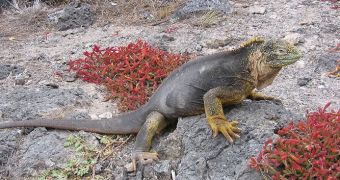After studying the color patterns of pygmy grasshopper thoroughly, an expert was able to conclude that they were significantly influenced by both genetic and environmental factors. While this should be of no surprise to anyone, the catch is that these changes took place at a rate that far exceeds the one currently believed to be governing the process of evolution and natural selection. The new work was done by Linnaeus University in Kalmar doctoral candidate Magnus Karlsson, who entitled his paper “Evolution in Changing Environments Revealed by Fire Melanism in Pygmy Grasshoppers.”
Since 1859, when famed naturalist Charles Darwin first published his magnum opus, On the Origin of Species, it has been a widespread belief among evolutionary biologists that changes in species occur over very long periods of time. The consensus is that hundreds of generations need to go by before any evolutionary change becomes visible, but the new work brings up some very valid points, which may see this belief being reshaped, or discarded altogether.
According to Karlsson, the new findings could bear significant implications in many areas of research, such as for example designing better conservation programs for endangered species, and also for improving yields in agriculture by a substantial margin. “But the most important part of the dissertation is that I have shown that evolution sometimes proceeds incredibly rapidly. This is huge,” he says, quoted by AlphaGalileo.
The pygmy grasshoppers were selected for this study because they exhibit incredibly high rates of color variation. For instance, the researcher noticed that in lands that had just been burnt, the insects tended to be mostly black, whereas in other areas, where fire did not ravage the place, they tended to have myriads of other colors and patterns on their bodies. An additional finding was that, over time, the populations in the burnt areas begin exhibiting large color variations as well as the land “heals,” whereas groups in unburnt area remain the same over prolonged periods of time.

 14 DAY TRIAL //
14 DAY TRIAL //